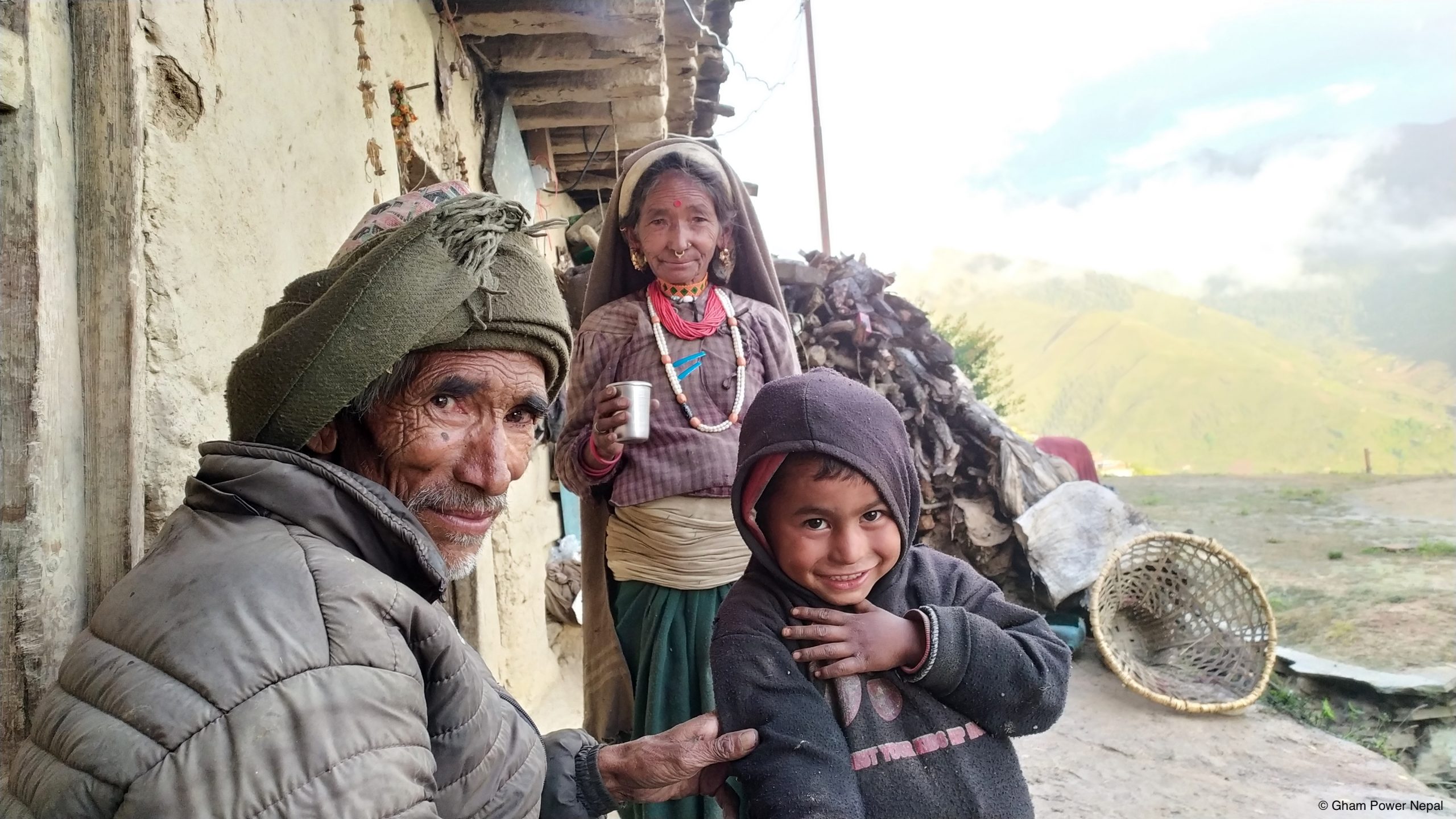During a severe energy crisis in 2010, cities in Nepal would lose power for up to 18 hours each day, leaving citizens without lighting, heating, kitchen appliances, and machinery for significant periods of time. Gham Power, a social enterprise focused on renewable energy, started out deploying over 2,500 photovoltaic systems for urban rooftops to alleviate the impact of these excessive power outages. In 2013, Gham Power moved to electrifying under-served rural areas of Nepal, which had significantly lower electrification rates compared to urban areas1. This local business deploys solutions such as solar rooftops, micro-grids, and solar micro-processing for agriculture.
Gham Power’s attention has shifted to the agricultural sector over time, shaped by evolving market needs and business opportunities emerging from several USAID innovation competitions. According to Nepal Demographic and Health Survey (DHS), 4.6 million people in Nepal are food insecure; households in rural areas are particularly vulnerable2. In addition, while Nepal’s agricultural sector contributes to 34% of the national GDP, the poverty rate among small farmers is 10% higher than the national average of 25.2%3. To address these critical issues, Feed the Future launched the 2017 Data Driven Farming Prize in partnership with USAID/Nepal and the U.S. Global Development Lab’s Center for Digital Development and Center for Development Innovation. The competition called for data-driven agricultural solutions to help smallholder farmers and other value chain actors access context-specific information, make effective farming decisions, and improve their value and productivity.

This competition incentivized Gham Power to develop Off-Grid Bazaar, an online platform that helps smallholder farmers analyze and manage their water and solar energy needs. Built on each farmer’s individual data, the software provides agricultural advisory services, such as calculating the optimal mix of crops or the optimal size for a solar water pump. In addition, the platform partners with microfinance organizations to help farmers access affordable financial services. Through Off-Grid Bazaar, Gham Power has deployed 186 active projects and impacted 6,510 smallholder farmers.
Gham Power’s model continued to evolve based on customer feedback over the years, and in 2020, the company competed in the Water and Energy for Food (WE4F) Asia Enhancing Development and Growth through Energy (EDGE) Ag-Energy Prize. This competition sought innovations at the intersection of renewable energy and agriculture, and targeted mid-stage businesses and youth innovators as solution generators. With their improved business model, Gham Power received a runners-up prize in the competition to scale up Off-Grid Bazaar; by 2025, Gham Power aims to impact 90,000 farmers4. USAID competitions, however, offer more than monetary prizes, as Niraula and Bhattarai explained: “We could benefit from technical assistance, or networking with someone who might be relevant in future ventures.” For example, as a result of the Asia EDGE Ag-Energy Prize, Gham Power is now connected to the Water and Energy for Food Grand Challenge hub in Southeast Asia. Niraula and Bhattari see this as an “amazing platform to pitch [their] innovations to others in the area,” as Gham Power is able to work with like-minded local companies and connect with potential growth opportunities in new markets through this regional hub. One “key benefit from participating in the event was connecting with potential business partners,” said Niraula and Bhattarai. Gham Power is considering expansion into Myanmar and Bangladesh and, through the Asia EDGE Ag-Energy Prize co-creation, were able to speak with companies already working in those markets. They also spoke with businesses in “different positions in the value chain to look for further market opportunities,” they explained.
In light of the COVID-19 pandemic, Gham Power has seen great benefits from their pivot to Off-Grid Bazaar and the SaaS model. Their previous model of direct infrastructure installations is slowing down; coming from urban Kathmandu, installation providers often face mistrust and stigma as potential disease vectors in the rural areas they are trying to electrify, and project deployments are complicated by logistical disruptions due to the pandemic. By leveraging the Off-Grid Bazaar software, Gham Power has still been able to get work done in solar agricultural development, even under restricted pandemic conditions.
Niraula and Bhattari predict that this model will slow down post-COVID, and know that they will again pivot to another model after some time. Gham Power’s iterative path thus far, they acknowledge, has been guided by the USAID competitions they have participated in. These opportunities linked their business to technical assistance, co-creation work, and advice from judges and other companies, all of which have helped strategically position Gham Power along the way. Now, the company is seeing a greater buzz and excitement around their innovative software services. Their flexibility and willingness to pivot along their journey has helped them survive and succeed thus far, and their resilience will continue with future challenges, changes, and iterations in the post-pandemic world as they electrify South Asia with their innovations.
This story was written and edited by Callie Wen on behalf of the Water and Energy for Food Grand Challenge.


